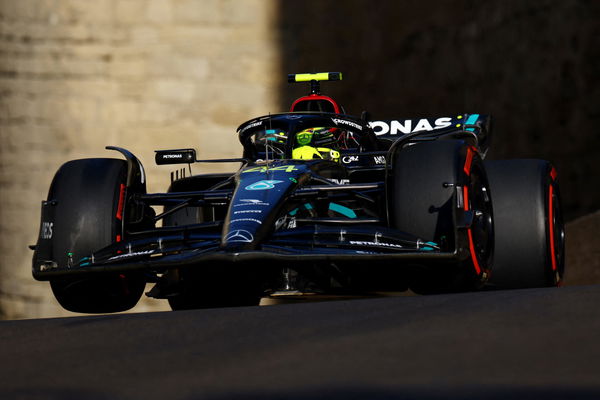
Imago
Image Courtesy: Imago L: Felipe Massa R: Lewis Hamilton

Imago
Image Courtesy: Imago L: Felipe Massa R: Lewis Hamilton
It wouldn’t be F1 if the competitors didn’t try and find loopholes in the regulations to gain any tiny bit of advantage over the competition. Mercedes DAS system or Aston Martin’s rear wing endplate reiteration are great recent examples. However, details about a scandal from 2013 involving Lewis Hamilton and Mercedes have been exposed amid Felipe Massa’s $13 Million lawsuit. What did Mercedes do?
Watch What’s Trending Now!
Felipe Massa has been in the news recently, not because he’s making an F1 comeback but because of the 2008 Crashgate saga. The Brazilian driver has filed a lawsuit against the F1 governing body, which is believed to be a $13,000,000 lawsuit in compensation for not taking action about the crash gate incident when the details about it were already known prior to the end of the season.
ADVERTISEMENT
However, shocking details since then have come out of a scandal that Mercedes were involved in during the 2013 season which included Lewis Hamilton and Nico Rosberg. Pirelli introduced a new tire construction for the 2013 season. However, after multiple tire failures, the tire manufacturer decided to test a new tire construction for the upcoming GPs. That’s all good and fair but this is where the problems began.
ADVERTISEMENT
Mercedes were selected as the team that’ll be used to conduct the tests. Mercedes and Pirelli did inform the FIA about it. However, the competition including Ferrari and Red Bull were not informed about it. Mercedes won the Monaco GP which happens to be the race after the tire test. Various questions were raised at the FIA international tribunal hearing. While nothing was conducted in bad faith, it was found that Mercedes, FIA, and Pirelli were guilty of breaching the in-season tire test rules as Mercedes used the 2013 competitor.
Read More: What Was Lewis Hamilton’s Response to Felipe Massa’s “Robbery” Accusations After Crashgate?
ADVERTISEMENT
As a result, Mercedes was banned from the 2013 young drivers test that took place with another new compound of tires as Hamilton along with others had suffered tire blowouts at the 2013 British GP. Red Bull went on to dominate the rest of the season.
What all regulations were not followed by the concerned parties
Mercedes were found in breach of the 22.4 H Sporting regulations that prevented any sort of in-season testing by a team. It was also found that while FIA gave the qualified approval both Mercedes and Pirelli didn’t inform any of the other teams and/or gave them the chance to test hence not following the prohibition of the Article 22 of the sporting regulations.
ADVERTISEMENT

Reuters
Formula One F1 – Azerbaijan Grand Prix – Baku City Circuit, Baku, Azerbaijan – April 28, 2023 Mercedes’ Lewis Hamilton during qualifying REUTERS/Lisi Niesner
It was also found that the test would not have happened if FIA did not give the approval that it did. Mercedes, knowingly or unknowingly gained a material advantage which led to a sporting advantage as confidential information was exchanged between Pirelli and Mercedes which was exclusive to the Brackley stable. As a result, both Mercedes and Pirelli breached the International sporting code 151.
Watch this Story: Biggest Scandals in F1 History
ADVERTISEMENT
What do you make of the details about the Mercedes scandal?
Top Stories
Rich Energy CEO Paid “Millions and Millions of Pounds” to Gene Haas Who Allegedly Tried to “Unseat” William Storey

Lewis Hamilton’s $100M Annual Salary to Keep Him From Retiring Soon at Ferrari: Reports

Carlos Sainz Creates New “CarLando” After Latest Claim About “Rival” Norris

Natalie Pinkham Reveals Amazing Story Behind Choosing Daniel Ricciardo as Her Daughter’s Godfather

Despite Shocking Breakup With Charles Leclerc, Ex GF Still Shares Close Ties With Ferrari

ADVERTISEMENT
ADVERTISEMENT
ADVERTISEMENT

